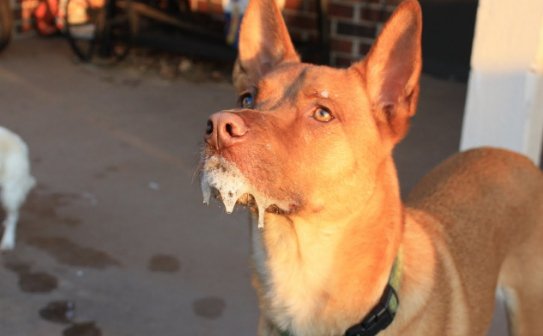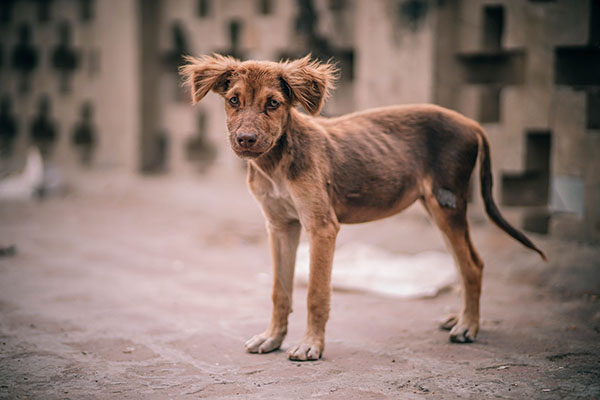Rabies is a killer virus spread to people and sometimes animals, too, from the saliva of infected animals. Most of the time, saliva can also give a minor effect on the skin. In most cases, the rabies virus is transmitted through a bite. Animals most likely to transmit Rabies in the United States include dogs, bats, coyotes, foxes, raccoons, and skunks.
Once an infected animal bites you, the virus can quickly spread throughout your body. The disease has also been known to spread through a scratch or an existing open wound.
Origin of Rabies:

The question arises how this vulnerable disease came into being, what was its origin? It all started back in 1768 during the old-world war (the first epizootic in the New World occurring in Boston). This is where it all started. Over a few years, it spread from state to state. Eventually becoming common across the world. The virus that spreads and causes this infectious disease is “Rabies Lyssavirus.” Rabies lyssavirus, formerly Rabies virus, is a neurotropic virus that causes rabies among humans and animals.
Humans love to wander around animals like cats, dogs, and different kinds of birds. Sometimes we get so emotionally connected to these animals as if they were a part of our family. Humans often keep them as a pet; hence they are always playing with them. The most common pet in America is a dog. It does not matter which race it belongs to. In their adorable moments, they sometimes get various diseases like Rabies. It can be so evitable that it may lead the animal and the owner to death. So, the best way to prevent such tragedies, one should look after his/her dog. There should be a hundred and ten percent surety that the pet does not have a rabies virus. Because if it does, that one thing for you to worry about. one dog bite or a single contact with the saliva of an infected rabies dog, it’s over. So always keep in mind to make sure that your dog does not possess the rabies virus.
Symptoms of a rabies-infected dog:

Below are some of the symptoms of an infected rabies dog:
- Paralysis of the throat: If you ever find disruption in your dog’s vocals, you better get the dog to a vet. It may be paralysis of the throat, which is a significant symptom of a dog getting Rabies.
- Paralysis of jaw muscles: It is also a significant symptom of Rabies. The jaw muscles of dos are sensitive to the rabies virus. That is why they get swollen or paralyzed when the germ or you can say the micro parasite (which causes rabies virus and other infectious diseases) enters the body.
- Foaming: A well-known symptom of a dog getting Rabies is that it starts to make foam out of his mouth. If you ever must deal with such a situation when your dog is foaming a lot through the mouth, you should get it to the vet.
- Disorientation: Disorientation and incoordination are also among the significant symptoms of a dog exposed to the rabies virus.
- Staggering: Staggering may occur, caused by paralysis of the hind legs.
- Loss of appetite: When the rabies virus enters the host’s body, it can affect the digestive system. If your dog is not taking its meal properly or showing ignorance to his food, you must look after him as it can end up with your dog having Rabies.
- Weakness: An infected rabies dog slowly but continuously loses his strength and stamina to play around. His body may shrink to a small extent. In short, the dog shows weakness. It becomes difficult for him to run for a long time. They become weak and fragile.
- Seizures: Idiopathic epilepsy, the most common cause of attacks in the dog, is an inherited disorder, but its exact cause is unknown. But the rabies-infected dog may show possible conditions for seizures. Other causes include liver disease, kidney failure, brain tumors, brain trauma, or toxins.
- Sudden death: A dog that is exposed to the rabies virus can become so weak that it might have a sudden death. Within a second, the dog may be lying in your garden if the owner does not take proper treatment and precautionary measures.
How Rabies Virus preys upon your dog:
One question for a cautious dog owner always comes to mind is how this virus gets into his dog, and what can he do to prevent his dog from getting it?
Below are some reasons explaining how dogs get Rabies in the first place.
- The dogs usually like to play with other dogs, and it is quite natural. It is in their impulse. Unfortunately, when they play around with rabies-infected dogs, they also get Rabies as dogs bite each other when they are hanging around.
- A puppy that is not vaccinated is more likely to get Rabies since the virus spreads through the tissue cells, harms the puppy, and eventually makes them suffer.
- Stray dogs: Dogs that we see around the streets are more likely to possess rabies virus. Recent studies have shown us that Rabies Encephalitis is a dog-borne viral illness caused mostly by stray dogs’ biting. Suppose ARV is not administered to the affected person and immunoglobulin. In that case, the patient (it can be you or your animal) suffers a miserable death due to hydrophobia and other disease complications. And these are the significant symptoms when a person or animal is exposed to the rabies virus.
- Scraps (dead body): Rabies infection is transmitted mainly through bites, cuts, and scrapes. Saliva or nervous system (e.g., brain) tissue is infectious. Blood, urine, and feces are not. If your dog has contact with a dead animal, avoid any direct contact with your skin, and avoid any activities resulting in the splashing of fluids. Because dead animal bodies are most likely to have rabies virus.
- Dirty water: This water itself contains many bacteria in it as it comes after visiting many places. Water can become the source of transmission of the rabies virus. For example, there is a stray dog who has Rabies. If this dog drinks water from a hose or a well, it can easily contaminate that water. Hence if your dog drinks water from the same well or hose, your dog is likely to get Rabies. Your dog may suffer after getting it. So you better keep your dog away from dirty water and anything scrap.
Treatment for pets with Rabies:
If you think your pet has been exposed to Rabies or bitten by a rabid animal, contact your veterinarian immediately. If your pet has been vaccinated, they will be quarantined for ten days, but treatment will not include re-vaccination. If your pet is unvaccinated and has contracted Rabies, they will be euthanized, and the brain tissue submitted for analysis. Make sure to follow the law and have your pet vaccinated.
Rabies vaccine (rabies shot)

To protect your pet medically and legally, have him or her vaccinated by your veterinarian. If you give the vaccine yourself, the law does not recognize your pet as having been vaccinated. In many communities, the rabies vaccine is coupled with the requirement to obtain a license for your pet. Unfortunately, some communities require yearly vaccination, although your pet is protected for more than one year by many vaccines. These communities are doing this to ensure that pets have annual licenses. Some veterinarians help pets avoid immune damage caused by over-vaccination by drawing titers to show a pet has a protective level of antibodies to the rabies virus.
The rabies vaccine or the rabies shot is required for dogs, cats, and ferrets traveling on interstate transport. Rabies certificates are also needed when traveling outside the United States. Most Canadian border crossing staff accept rabies vaccine titers in place of a vaccine certificate.
Duration of rabies vaccine immunity depending upon which vaccine is used:
Dogs: 1-3 years
There is no legal injectable vaccine for wildlife and wolves or wolf-hybrids. Some state and federal agencies can legally vaccinate wildlife with oral vaccines.
Conclusion
If a person has a pet, he/she should always be cautious about their pet. Dogs are more likely to get Rabies as their instinct is to bite each other. Since the primary source of the spread of the rabies virus is saliva, dogs are most likely to become hosts for the rabies virus. There are millions of sources for a dog to get Rabies, which includes drinking dirty water (which is contaminated) or getting bitten by an infected rabies dog. It can also spread into their body by not focusing on their vaccination. That is why vets always advise you for the proper vaccination. Unfortunately, if your dog shows a rabies-infected animal’s symptoms, you do not need to panic. Just take your dog to the vet and give him rabies shots. That is one of the best ways to deal with Rabies attacked dogs. Once the dog is adequately treated, there is nothing to worry about.
